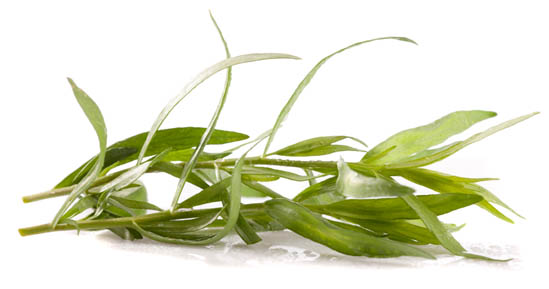
Name: Tarragon (Artemisia dracunculus)
Family: Asteraceae
Common Names: French Tarragon, Dragonwort, Dragon Wormwood
Range: Native to Europe, India, Asia, Mexico and North America
Parts Used: Leaves and stems
Preparations: Dried leaves used in cooking and combined with other herbs to create seasoning blends.
History: The species name of “dracunculus” translates from Latin to mean “little dragon,” which explains the reference to the mythical beasts in some of the common names that are associated with this herb. As a member of the Asteraceae genus, tarragon is related to [absinthe] wormwood from which the liquor is produced. Unlike wormwood and other members of this family, however, French tarragon rarely produces flowers. Dioscurides, Galen and other advocates of the Doctrine of Signatures believed that because the root of the plant resembled a serpent that it must provide an antidote for snakebite.
Tarragon is used in French cuisine, where it is a component of fines herbes and used to enhance the flavor of culinary vinegars, egg dishes, fish, chicken and sauces, most notably the classic Béarnaise sauce. The herb imparts a strong spicy flavor that resembles anise or licorice, but with woody undertones. In the garden, tarragon is a suitable companion plant for many other herbs and vegetables and tends to deter leaf-eating insects.
Constituents: Estragole, limonene, eugenol and various terpenes.
Cautions/Contraindications: Because compounds in this herb may inhibit platelet adhesion and blood clotting, consult a health care practitioner before ingesting if you take blood-thinning medications.
Disclaimer: This information has not been evaluated by the U.S. Food and Drug Administration and is not intended to diagnose, treat, cure, or prevent any disease.
